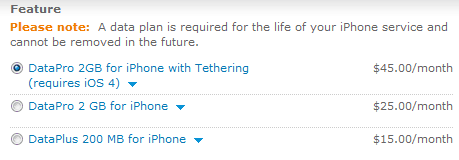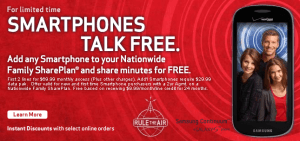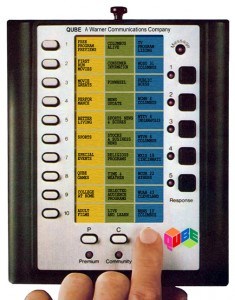 Comcast wants to be paid twice for carrying Netflix online video content to its customers: once from customers themselves and a second time from Level 3 Communications, Inc., the company providing much of Netflix’s streamed video traffic.
Comcast wants to be paid twice for carrying Netflix online video content to its customers: once from customers themselves and a second time from Level 3 Communications, Inc., the company providing much of Netflix’s streamed video traffic.
“On Nov. 19 Comcast informed Level 3 that, for the first time, it will demand a recurring fee from Level 3 to transmit Internet online movies and other content to Comcast’s customers who request such content,” said Level 3’s chief legal officer, Thomas Stortz, in a statement. “By taking this action, Comcast is effectively putting up a toll booth at the borders of its broadband Internet access network, enabling it to unilaterally decide how much to charge for content which competes with its own cable TV and Xfinity delivered content.”
The backbone and content distribution company accused Comcast of threatening the open Internet and of abusing its market position as America’s largest cable broadband provider. Comcast disageed, calling Level 3’s position “duplicitous” and accused the company of sending far more traffic from its content partners than the cable giant sends in the other direction.
Joe Waz, senior vice president of External Affairs and Public Policy Counsel at Comcast posted a response on the company’s blog claiming Level 3 was trying to have it both ways, running a lucrative content delivery business for clients like Netflix while also acting as a major Internet backbone provider. Waz claims Level 3 is purposely confusing the fair exchange of backbone traffic with the commercial content delivery business it also runs:
Comcast has long established and mutually acceptable commercial arrangements with Level 3′s Content Delivery Network (CDN) competitors in delivering the same types of traffic to our customers. Comcast offered Level 3 the same terms it offers to Level 3′s CDN competitors for the same traffic. But Level 3 is trying to gain an unfair business advantage over its CDN competitors by claiming it’s entitled to be treated differently and trying to force Comcast to give Level 3 unlimited and highly imbalanced traffic and shift all the cost onto Comcast and its customers.
To quantify this, what Level 3 wants is to pressure Comcast into accepting more than a twofold increase in the amount of traffic Level 3 delivers onto Comcast’s network — for free. In other words, Level 3 wants to compete with other CDNs, but pass all the costs of that business onto Comcast and Comcast’s customers, instead of Level 3 and its customers.
Level 3′s position is simply duplicitous. When another network provider tried to pass traffic onto Level 3 this way, Level 3 said this is not the way settlement-free peering works in the Internet world. When traffic is way out of balance, Level 3 said, it will insist on a commercially negotiated solution.
But Level 3 claims Comcast threatened to pull the plug if they didn’t agree to the cable company’s demands, which would have cut off Comcast customers from a wide range on content. The company agreed to pay Comcast under protest, and took the issue public just as attention has become re-focused on Net Neutrality at the Federal Communications Commission.
 The dispute increasingly resembles cable TV carriage fights where programmers threaten to yank programming if their terms are not met. Had Comcast delivered on its alleged threat to cut ties to Level 3, widespread disruptions of content delivery could have been the result, starting with a blockade against Netflix streaming video. That would leave Comcast broadband customers paying for a hobbled Internet experience, missing popular websites because of Comcast’s roadblocks wherever Level 3 traffic was involved.
The dispute increasingly resembles cable TV carriage fights where programmers threaten to yank programming if their terms are not met. Had Comcast delivered on its alleged threat to cut ties to Level 3, widespread disruptions of content delivery could have been the result, starting with a blockade against Netflix streaming video. That would leave Comcast broadband customers paying for a hobbled Internet experience, missing popular websites because of Comcast’s roadblocks wherever Level 3 traffic was involved.
It’s a classic case of a Net Neutrality violation, with money being the motivating factor. Pro-consumer public policy groups immediately pounced on the news.
“Comcast’s request of payment in exchange for content transmission is yet another example of why citizens need strong, effective network neutrality rules that include a ban on such ‘paid prioritization’ practices,” said Andrew Jay Schwartzman, senior vice president and policy director of Media Access Project. “It is also yet another clear demonstration of why Comcast should not be permitted to acquire NBC Universal, given its clear tendency to exercise control in the video marketplace.”
“On its face, this is the sort of toll booth between residential subscribers and the content of their choice that a Net Neutrality rule is supposed to prohibit,” said Harold Feld, legal director of Public Knowledge. “In addition, this is exactly the sort of anticompetitive harm that opponents of Comcast’s merger with NBC-Universal have warned would happen — that Comcast would leverage its network to harm distribution of competitive video services, while raising prices on its own customers.”
Although Netflix and officials at the Federal Communications Commission both refused comment, analysts predict consumers will ultimately pay the price for Comcast’s newest fees in the form of higher prices for online content. Comcast does not impose these fees on its own TV Everywhere online video service, Xfinity Fancast. Waiving expensive content delivery fees for “preferred content partners” could leave independent competitors like Netflix vulnerable to the whims of the broadband providers charging extra to deliver traffic to paying customers.
The FCC is rumored to be considering enacting some broadband reforms before new Republican members of Congress take their seats in January.
(Thanks to several of our readers, including Terry and ‘PreventCaps’ for sending word.)
[flv]http://www.phillipdampier.com/video/Bloomberg Comcast Internet Toll Booth 11-30-10.flv[/flv]
Bloomberg News briefly covered the dispute in this morning’s Business Briefs segment. (1 minute)


 Subscribe
Subscribe





